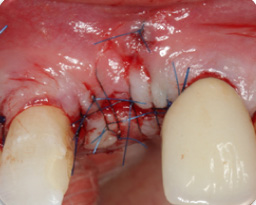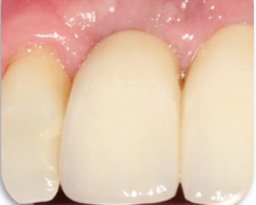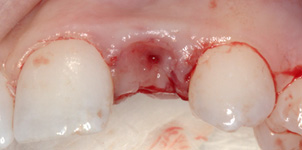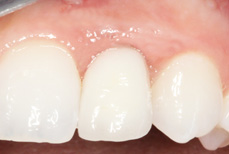Indentations In The Gums And Jawbone
Tooth loss can cause an indentation in the gums and jawbone where the tooth used to be. This happens because the jawbone recedes when it no longer is holding a tooth in place. Not only is this indention unnatural looking, it also causes the replacement tooth to look too long compared to the adjacent teeth.
Ridge augmentation can fill in this defect recapturing the natural contour of the gums and jaw. A new tooth can then be created that is natural looking, easy to clean and beautiful.


Ridge Preservation
When it becomes necessary to remove an anterior tooth in the “smile zone”, careful management of the site at the time of extraction prevents unnecessary shrinkage of the supporting gum tissue and bone in this highly esthetic site. In addition, some patients have a high lip line, exposing more of the surrounding bone and gum than others. These patients are a major challenge when an anterior tooth is lost, since the normal lip position when smiling or speaking completely exposes the teeth and gum area!.
After a tooth is extracted, we know from research that the surrounding bone will shrink 30-50% during the first 3 months. If this shrinkage occurs, it then becomes very difficult to place a dental implant into the optimal 3-dimensional position for long-term stability and, most of all, an esthetic appearance.
So, how is this prevented? The treatment of an extraction site with bone grafting to prevent the bone space from shrinking has to be done immediately upon extraction. Secondly, a soft tissue graft is added at this step to compensate for the shrinkage of gum tissue due to the extraction healing process.
The case illustrated below is an example of this exact procedure. This patient had a high lip line and a failing, unsalvageable front tooth. After ridge preservation as described, the result was placement of an implant and crown that produced a perfectly natural appearance.


